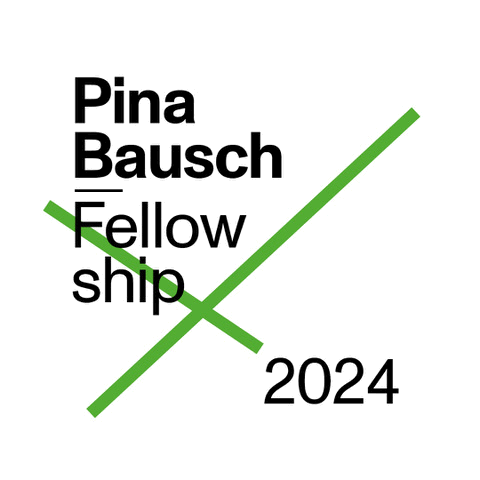Eiko Otake and Wen Hui
Eiko Otake
Born and raised in Japan and a resident of New York since 1976, Eiko Otake is a movement-based, interdisciplinary artist. She worked for more than 40 years as Eiko & Koma but since 2014 has been performing her own solo project A Body in Places.
After studying with Kazuo Ohno and Tatsumi Hijikata in Japan and Manja Chmiel in Germany, Eiko & Koma relocated to America and went on to create 46 interdisciplinary performance works, two career exhibitions, and numerous media works. Always performing their own choreography, Eiko & Koma usually designed and handcrafted all aspects of their works including sets, costumes, and sound. They presented their works in theaters, universities, museums, galleries, outdoor sites, and festivals worldwide, including many appearances at the American Dance Festival and the Walker Art Center and five seasons at BAM’s Next Wave Festival. Durational performance works they call living installations were commissioned by the Whitney Museum, the Walker Art Center, and MoMA. The Walker Art Center published a comprehensive monograph of their works, Eiko & Koma: Time is Not Even, Space is Not Empty, as a part of their Retrospective Project (2009 to 2012), which included new performance works, restaging of old works, media works, installations, museum exhibitions, film showings, panels, and lectures. Eiko & Koma were honored with the first United States Artists Fellowship (2006). They are the first collaborative pair to share a MacArthur Fellowship (1996) and the first Asian choreographers to receive the Samuel H. Scripps American Dance Festival Award (2004) and the Dance Magazine Award (2006). They were individually honored by the Guggenheim Fellowship (1984) and the first Doris Duke Artist Awards (2012).
Eiko’s solo project began with a 12-hour performance at 30th Street Station in Philadelphia. Since then, Eiko has performed variations of the project at over 40 sites. Performing as a soloist, Eiko willfully partners with the particularities of places and viewers. In spring 2016, she was the subject of the 10th annual Danspace Project Platform, titled A Body in Places. This month-long curated program included daily solos, weekly installations, a film series, a book club, discussions, group solo shows, Talking Duets, and a 24-hour photo exhibition of A Body in Fukushima. These activities brought her a Bessie Special Citation (2016), an Art Matters fellowship (2015), the Anonymous Was a Woman Award (2016), and the Sam Miller Award for Performing Arts (2020).
Since 2014, Eiko has collaborated with photographer and historian William Johnston, visiting post-nuclear meltdown Fukushima several times to create photo exhibitions, A Body in Fukushima, which have been presented in many cities where she has toured. In 2017, co-presented by Performa 2017 and Met Live Arts, Eiko performed all day at the three Met buildings: the Cloisters, the Breuer, and the main building on Fifth Avenue. For this work, Eiko created a seven-hour video from the haunting images of herself dancing in irradiated Fukushima.
In 2017, Eiko inaugurated The Duet Project, an open-ended series of cross-disciplinary, cross-cultural, and cross generational experiments with a radical diversity of fellow artists both living and dead.
Wen Hui
A choreographer and dancer, Wen Hui also makes documentary films and installations. She is one of the pioneers of Chinese contemporary dance theatre. Wen Hui graduated from Beijing Dance Academy in 1989 with a degree in Choreography. In 1994, she studied modern dance in New York. From 1997 to 1998, she received a scholarship from Asian Cultural Council to further her study of modern dance and theatre making in New York. In 1994, she formed Living Dance Studio with Wu Wenguang in Beijing, and has participated in curating and organizing numerous arts projects. For twenty years, Wen Hui has insisted in using theatre as an intervention in the society. Since 2008, she began to research the ways body form the archive of personal social documentation, using personal means to experiment how bodily memory catalyzes collision between history and reality.
Living Dance Studio is an independent non-profit contemporary dance creative collective. Since 1994 till now, the company has been active at the cutting-edge of Chinese contemporary art as well as the most probing stages and festivals internationally. They have presented their works in over seventy cities in thirty countries, winning international high appraisals.
French magazine Télescope describes Wen Hui as “a pioneer of dance…a miracle.”. In 2019, Wen Hui participated in the dual solo exhibition Yvonne Rainer and Wen Hui: Dance Only Exists When It Is Performed at the Beijing Inside-out Art Museum. In 2015 Wen Hui’s work Dancing with Third Grandmother and Dancing with Farmer workers was presented at the Venice Biennale in Italy. In 2004, Report on Body by Living Dance Studio won the “ZKB Patronage Prize” in Zürcher Theater Spektakel. In 2005, Wen Hui and Wu Wenguang established Caochangdi Workstation and co-curated the first “Cross-arts” International Dance Festival in Beijing. In the same year, they initiated European Artists Exchange Project and Young Choreographers Project.
Wen Hui is the winner of the Goethe Medal in 2021.

